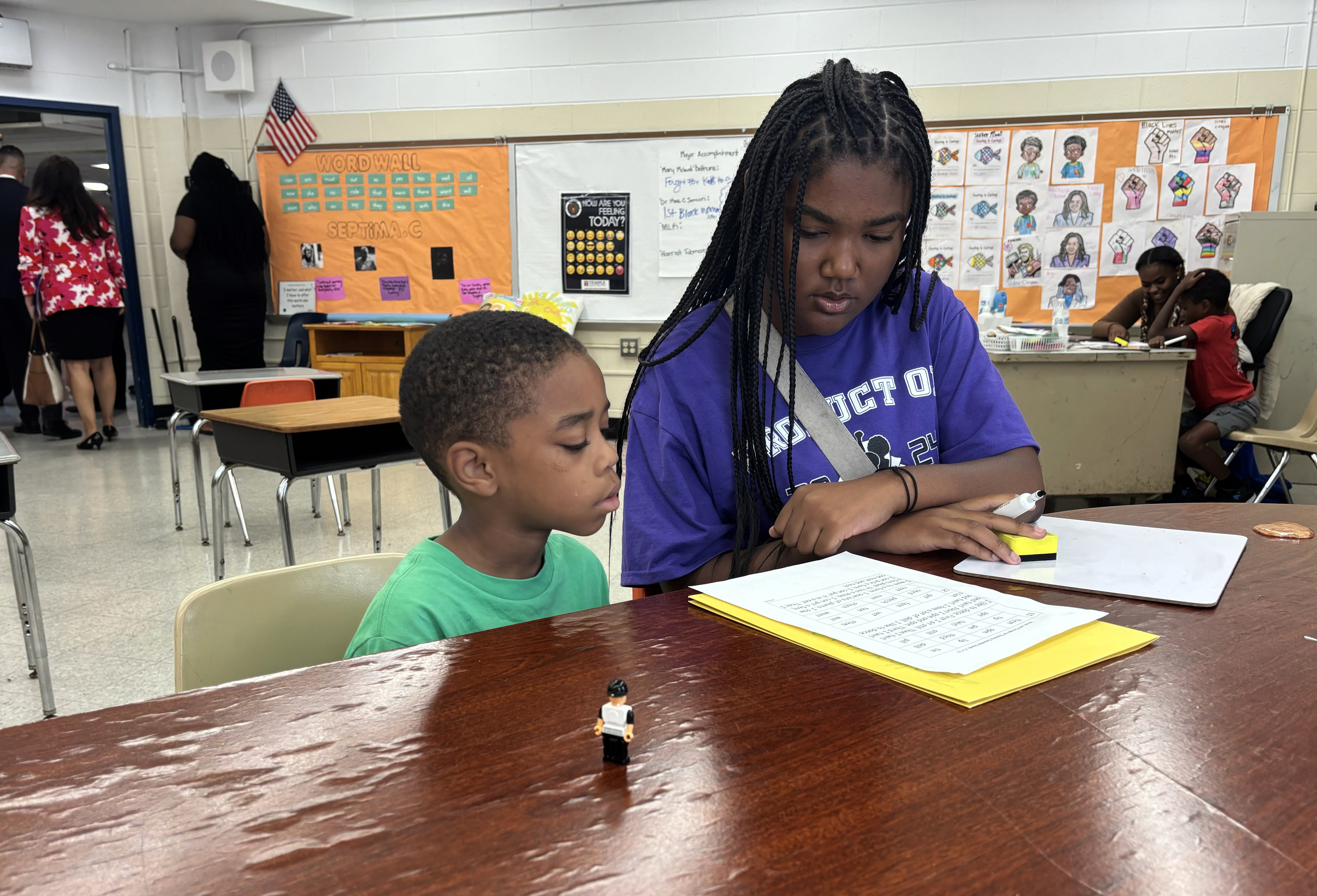Report on Educational Advancement and Sustainable Development Goal Achievement in Södertälje, Sweden
Executive Summary
The municipality of Södertälje, Sweden, has demonstrated significant progress in advancing educational outcomes, reflecting a successful implementation of strategies aligned with the United Nations Sustainable Development Goals (SDGs). Following years of targeted interventions, ninth-grade students achieved record exam scores in the spring semester of 2025. This achievement highlights a profound commitment to SDG 4 (Quality Education), SDG 10 (Reduced Inequalities), and SDG 16 (Peace, Justice and Strong Institutions). The success, particularly noted in schools with diverse student populations, serves as a model for creating equitable and high-quality learning environments.
Strategic Framework and Implementation
The improved academic results are the outcome of a deliberate, long-term strategy characterized by institutional stability and a focus on inclusive practices. This approach directly supports several key SDG targets.
Commitment to SDG 4: Quality Education
The municipality’s strategy was built on ensuring access to and improving the quality of education for all students. Key actions included:
- Sustained Financial Investment: Schools were protected from government budget cuts, ensuring the necessary resources for long-term planning and the maintenance of high-quality educational facilities and programs, in line with Target 4.a (Build and upgrade education facilities).
- Focus on Foundational Education Completion: The effort concentrated on ninth-grade students, the final year of compulsory education, to ensure they successfully pass exams and qualify for upper secondary education, directly addressing Target 4.1 (Ensure all children complete free, equitable and quality primary and secondary education).
Fostering Inclusive and Participatory Environments (SDG 16)
The success was also dependent on building strong, responsive, and inclusive institutions, a core principle of SDG 16.
- Responsive Decision-Making: The educational leadership actively incorporated student feedback into its improvement processes. As noted by students at Wasaskolan, “When we had suggestions for improvements, they listened to us.” This fulfills Target 16.7 (Ensure responsive, inclusive, participatory and representative decision-making).
- Effective Institutional Governance: The targeted, multi-year approach demonstrates the capacity of local government to develop and execute effective and accountable policies, contributing to Target 16.6 (Develop effective, accountable and transparent institutions).
Analysis of Outcomes and Impact on SDG 10: Reduced Inequalities
The results show a clear reduction in educational disparities, a central goal of SDG 10. The progress at Wasaskolan, located in the majority Syriac neighborhood of Geneta, provides a compelling case study.
Key Performance Indicators
- Wasaskolan: Student eligibility for upper secondary school rose from just under 80% in 2020 to 86.8% in 2025.
- Municipality-Wide Improvement: All schools in Södertälje now report an eligibility rate of over 80%.
Impact on Social Equity
These outcomes demonstrate a significant step toward ensuring equal opportunity and reducing inequalities of outcome, as mandated by Target 10.3. By raising performance in a school serving a large ethnic minority community—the Syriac population being one of the largest and most integrated in Sweden—the municipality has actively promoted the social inclusion of all its residents, aligning with Target 10.2.
Conclusion
The educational turnaround in Södertälje is a testament to a holistic strategy that intertwines the objectives of multiple Sustainable Development Goals. By ensuring sustained funding, fostering inclusive and participatory environments, and focusing on equitable outcomes for all demographic groups, the municipality has not only elevated academic standards but has also created a powerful and replicable model for achieving SDG 4 (Quality Education) and SDG 10 (Reduced Inequalities) through the mechanism of SDG 16 (Strong Institutions).
1. Which SDGs are addressed or connected to the issues highlighted in the article?
-
SDG 4: Quality Education
This is the most prominent SDG in the article. The text focuses entirely on the improvement of educational outcomes in Södertälje, Sweden. It discusses record exam scores for ninth-grade students, the final year of compulsory education, and increased eligibility for upper secondary education. The efforts of Wasaskolan to raise student performance are a direct reflection of striving for quality education.
-
SDG 10: Reduced Inequalities
The article highlights the success of a school in a “majority Syriac neighborhood” and specifically mentions the achievements of Syriac students. By focusing on a minority group’s educational progress and successful integration, including their representation in the Swedish parliament, the article touches upon the goal of reducing inequalities and promoting the social and political inclusion of all, irrespective of ethnicity.
-
SDG 16: Peace, Justice and Strong Institutions
This goal is relevant through the mention of effective governance and inclusive processes. The article notes that the positive results were possible due to a “long-term, targeted approach” and stable funding (no budget cuts), which points to strong local institutions (the municipality). Furthermore, the student quote, “When we had suggestions for improvements, they listened to us,” demonstrates a responsive and participatory decision-making process at the school level, which is a key aspect of Target 16.7.
2. What specific targets under those SDGs can be identified based on the article’s content?
-
SDG 4: Quality Education
-
Target 4.1: By 2030, ensure that all girls and boys complete free, equitable and quality primary and secondary education leading to relevant and effective learning outcomes.
The article directly addresses this target by discussing the results of ninth-grade students, which marks the end of compulsory lower secondary education in Sweden (‘Grundskola’). The “record exam scores” and the increase in the percentage of students achieving “upper secondary school eligibility” are clear examples of “relevant and effective learning outcomes.”
-
Target 4.5: By 2030, eliminate gender disparities in education and ensure equal access to all levels of education and vocational training for the vulnerable, including persons with disabilities, indigenous peoples and children in vulnerable situations.
The article’s focus on Wasaskolan, located in a “majority Syriac neighborhood,” and the success of its students, who belong to an ethnic minority group in Sweden, aligns with this target. The improved results demonstrate a move towards ensuring equal access to quality education and better outcomes for this specific community.
-
Target 4.1: By 2030, ensure that all girls and boys complete free, equitable and quality primary and secondary education leading to relevant and effective learning outcomes.
-
SDG 10: Reduced Inequalities
-
Target 10.2: By 2030, empower and promote the social, economic and political inclusion of all, irrespective of age, sex, disability, race, ethnicity, origin, religion or economic or other status.
The article supports this target by not only highlighting the educational achievements of Syriac students but also by mentioning their broader integration and political inclusion, stating that “the Syriac people have two parliamentarians in the Swedish Riskdag.”
-
Target 10.2: By 2030, empower and promote the social, economic and political inclusion of all, irrespective of age, sex, disability, race, ethnicity, origin, religion or economic or other status.
-
SDG 16: Peace, Justice and Strong Institutions
-
Target 16.7: Ensure responsive, inclusive, participatory and representative decision-making at all levels.
This target is directly supported by the testimony of students Mariaan Khazzoum and Natalia Duros, who said, “When we had suggestions for improvements, they listened to us.” This quote is a clear indicator of a participatory and responsive decision-making process within the school, which is an institution at the local level.
-
Target 16.7: Ensure responsive, inclusive, participatory and representative decision-making at all levels.
3. Are there any indicators mentioned or implied in the article that can be used to measure progress towards the identified targets?
- Percentage of students eligible for upper secondary education: This is a direct quantitative indicator mentioned in the article for measuring progress towards Target 4.1. The text states that Wasaskolan raised this figure “from just under 80 percent in 2020 to 86.8 percent.” The head of primary schools also mentions a benchmark: “We don’t have any school that is below 80 percent eligibility.”
- Student exam scores: The article mentions that “ninth-grade students achieved record exam scores.” While not providing the specific scores, this serves as a qualitative indicator of improved learning outcomes (Target 4.1).
- Educational outcomes for an ethnic minority group: The article’s focus on the success of Syriac students in a specific school implies the tracking of educational data disaggregated by ethnicity, which is relevant for measuring progress on Target 4.5.
- Political representation of minority groups: The article provides a concrete number for this indicator related to Target 10.2 by stating that the Syriac people have “two parliamentarians in the Swedish Riskdag.”
- Student perception of participation in decision-making: The quote “they listened to us” is a qualitative indicator for Target 16.7, reflecting the students’ experience of an inclusive and responsive school environment.
4. Table of SDGs, Targets, and Indicators
| SDGs | Targets | Indicators |
|---|---|---|
| SDG 4: Quality Education |
4.1: Ensure all children complete free, equitable, and quality primary and secondary education.
4.5: Ensure equal access to all levels of education for the vulnerable. |
– Percentage of students eligible for upper secondary education (rose from <80% to 86.8% at Wasaskolan). – Achievement of “record exam scores” by ninth-grade students. – Educational outcomes for Syriac students in a majority Syriac neighborhood. |
| SDG 10: Reduced Inequalities | 10.2: Empower and promote the social, economic and political inclusion of all. | – Number of parliamentarians from the Syriac minority group (stated as “two”). |
| SDG 16: Peace, Justice and Strong Institutions | 16.7: Ensure responsive, inclusive, participatory and representative decision-making. | – Qualitative student feedback on being heard by the school administration (“When we had suggestions for improvements, they listened to us.”). |
Source: syriacpress.com







